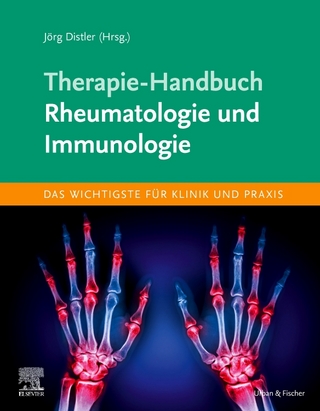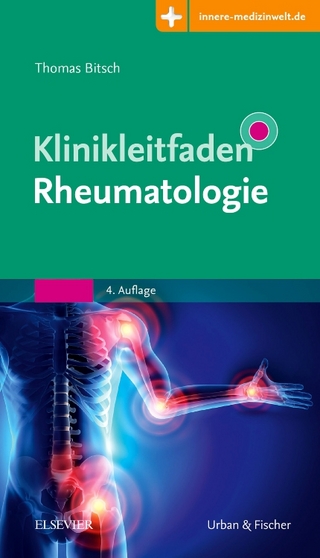Experimental Models of Chronic Inflammatory Diseases
Springer-Verlag Berlin and Heidelberg GmbH & Co. K
978-3-540-08095-4 (ISBN)
Lese- und Medienproben
- Titel ist leider vergriffen;
keine Neuauflage - Artikel merken
With the introduction of antibiotics acute inflammatory disease has ceased to be the dominant problem in general medical practice and its place is now increasingly occupied by chronic inflamma- tory disease of which the rheumatic diseases constitute the most important group. lwo aspects of these diseases need to be consid- ered, their aetiology and their pathogenesis. In some respects the latter is more important since even when the aetiology is known, as for example the haemolytic streptococcus in rheumatic fever, the mechanism by which the infecting agent accomplishes the development of the lesions that characterise the disease are still largely unknown. Still more so is this the case in rheuma- toid arthritis and other chronic inflammations where the aetio- logical agents are unknown. In an attempt to clarify the pathogenic mechanisms involved, sev- eral attempts have been made to induce comparable lesions in ex- perimental animals, partly to test underlying hypotheses, and partly to provide test situations for the trial of new therapeu- tic agents.
In view of the deficiencies in the current drug treat- ment of chronic inflammatory disease there are many who feel that this is largely due to the inadequacy of the models avail- able for test purposes.
Welcome.- Experimental Models of Rheumatoid Lesions.- Experimental Models of Rheumatoid Inflammation. With 4 Figures.- Persistence of Antigen in Experimental Allergic Monoarthritis.- Experimental Subcutaneous Granulomata Simulating R.A. Nodules.- Studies on the Mitotic Responsiveness of "T" Cells After Stimulation with Contact Sensitizing Agents. With 2 Figures.- Rheumatoid-Type Lymph Node Changes in Animals Exhibiting Immunoregulatory Defects. With 6 Figures.- Experimental Models and Systemic Lupus.- Autoimmunity: A Problem of Disordered Immunologic Regulation.- Chronic Infections of C-Type RNA Viruses.- Evidence for a Virus in Canine Systemic Lupus Erythematosus.- Viral Replication in Lymphocytes and the Pathogenesis of Connective Tissue Diseases. With 8 Figures.- Recent Approaches to Experimental Immune Complex Disease and Allergic Vasculitis.- Immune Complex Diseases: Cellular Mediators and the Pathogenesis of Inflammatory Tissue Injury Produced by Immune Complexes. With 1 Figures.- Antibody Affinity, Macrophage Function and Immunoregulation in Murine Immune Complex Disease. With 4 Figures.- Features of Human Spontaneous Vasculitis Reproduced Experimentally in Animals. Effects of Antiglobulins, C-Reactive Protein and Fibrin.- Mechanisms Involved in Clinical Allergic Vasculitis.- Significance of Anti-IgG Antibodies in Experimental Arthritis. With 5 Figures.- Immune Complex Arthritis - In Man and Experimental Animals. With 2 Figures.- Arthritis During the Course of Experimental or Natural Infection.- Rheumatoid Arthritis and the Virus Hypothesis. With 3 Figures.- Teno-Synovitis (Viral Arthritis) of Chickens.- Hemostasis, Fibrin Incorporation and Local Mesenchymal Reaction in Erysipelothrix Infection as a Model for Rheumatism Research. With 18 Figures.- Erysipelothrix Arthritis in Rabbits.- Mycoplasma Infection and Arthritis of Chickens.- Experimental Models of Streptococcal Arthritis: Pathogenetic Role of Streptococcal Products and Prostaglandins and Their Modification by Anti-Inflammatory Agents. With 20 Figures.- Control Mechanisms in Inflammatory Responses.- The Regulation of the Participation of Mononuclear Phagocytes in Inflammatory Responses. With 10 Figures.- The Kinetics of Chronic Inflammatory Cellular Infiltrates.- Pathology of Lymphoid Tissue in Rheumatoid Arthritis and Allied Diseases. With 16 Figures.- Lymphocyte Infiltration and Proliferation of Stroma Cells of Synovial Tissue in Rheumatoid Arthritis. With 6 Figures.- Aspects of Synovial Biodegradation. With 15 Figures.- An Effect of Joint Fluid on Blood Monocytes. With 1 Figures.- Should We Stimulate or Suppress the Inflammatory Response?.- Should we Suppress or Stimulate the Immune Response in Inflammation? With 3 Figures.- The Action of Anti-Inflammatory Drugs on the Lymphocyte-Macrophage Axis. With 3 Figures.- Problems in Analysing the Actions of Immunosuppressive Agents in Immuno-Inflammatory Disease. With 4 Figures.- Influence of Anti-Inflammatory Drugs on Connective Tissue Metabolism. With 11 Figures.- Final General Discussion and Resume.
| Reihe/Serie | Bayer-Symposium ; 6 |
|---|---|
| Zusatzinfo | biography |
| Verlagsort | Berlin |
| Sprache | englisch |
| Gewicht | 1010 g |
| Themenwelt | Medizinische Fachgebiete ► Innere Medizin ► Rheumatologie |
| Studium ► 2. Studienabschnitt (Klinik) ► Pathologie | |
| Studium ► Querschnittsbereiche ► Infektiologie / Immunologie | |
| ISBN-10 | 3-540-08095-3 / 3540080953 |
| ISBN-13 | 978-3-540-08095-4 / 9783540080954 |
| Zustand | Neuware |
| Haben Sie eine Frage zum Produkt? |
aus dem Bereich



